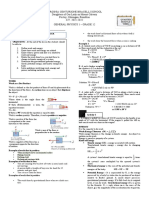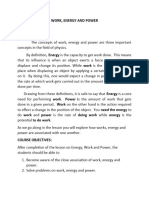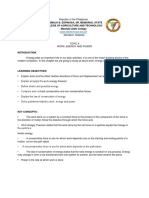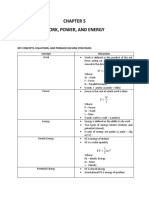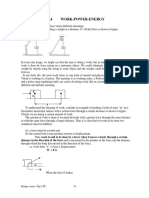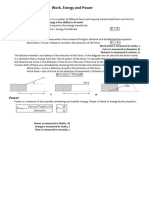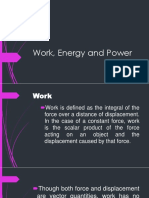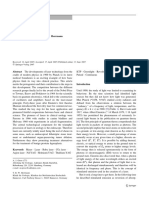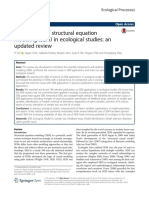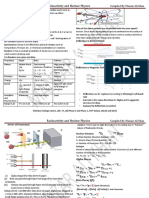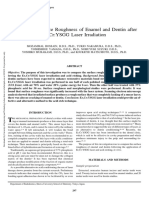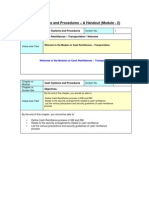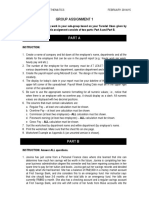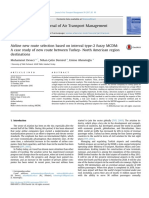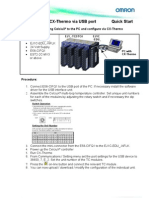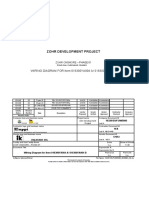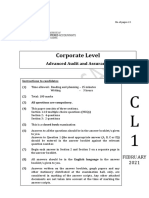0% found this document useful (0 votes)
59 views4 pagesWork, Energy and Power: Compiled By: Manzar Ali Khan
Work is the product of the applied force and the distance moved in the direction of the force. There are two types of mechanical energy: kinetic energy (K), the energy of motion, and potential energy (U), the energy due to an object's position. The total energy of a closed system remains constant according to the principle of conservation of energy. Power is defined as the rate of doing work or transferring energy and is measured in watts (joules per second).
Uploaded by
mustafaCopyright
© © All Rights Reserved
We take content rights seriously. If you suspect this is your content, claim it here.
Available Formats
Download as DOCX, PDF, TXT or read online on Scribd
0% found this document useful (0 votes)
59 views4 pagesWork, Energy and Power: Compiled By: Manzar Ali Khan
Work is the product of the applied force and the distance moved in the direction of the force. There are two types of mechanical energy: kinetic energy (K), the energy of motion, and potential energy (U), the energy due to an object's position. The total energy of a closed system remains constant according to the principle of conservation of energy. Power is defined as the rate of doing work or transferring energy and is measured in watts (joules per second).
Uploaded by
mustafaCopyright
© © All Rights Reserved
We take content rights seriously. If you suspect this is your content, claim it here.
Available Formats
Download as DOCX, PDF, TXT or read online on Scribd
/ 4











